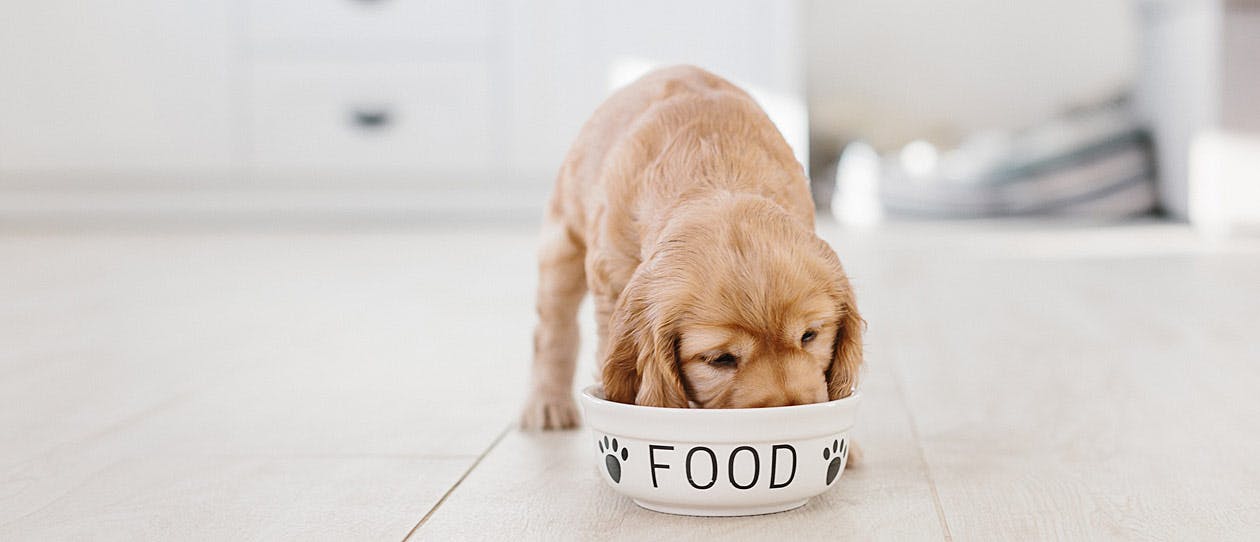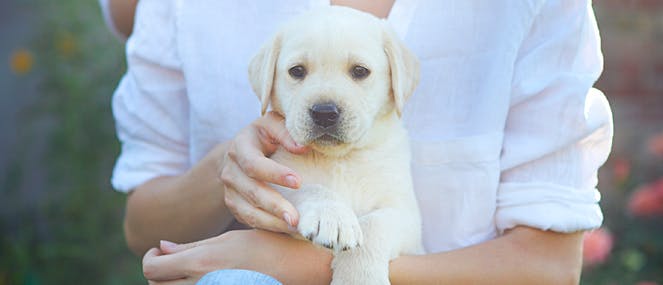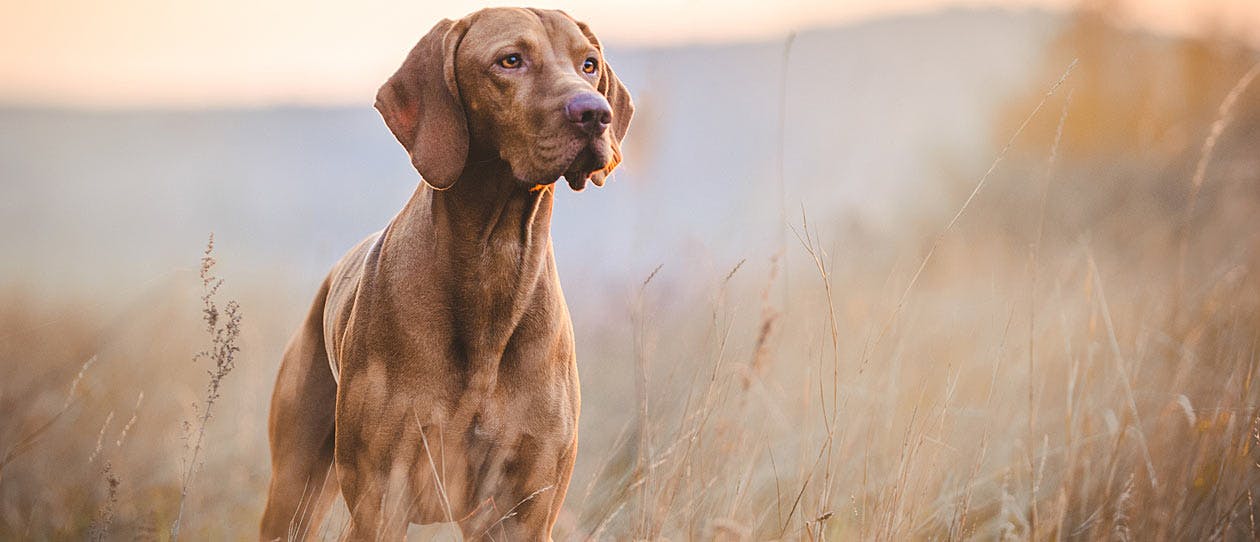
- A Guide To Perfect Your Pet's Health/
- Manage Your Dog's Digestive Health/
- Guide To How Much You Should Be Feeding Your Pup


“It’s important to know how much you should be feeding your pet based on these factors,” says veterinarian Dr Trish Santos-Smith. “Overfeeding can lead to all manner of health conditions, from joint issues to diabetes, while underfeeding can come with its own concerns, including malnutrition.”
Feeding your furry friend the right food also matters – again, this depends on factors such as health conditions and age. While there are definite things to avoid when it comes to your dog’s diet (put away the chocolate, grapes and macadamia nuts), in general most dogs are fairly flexible eaters, says Dr Santos-Smith. “As long as their diet is balanced and they’re getting all the nutrients they need from their food, they’ll thrive.”
How much should dogs eat based on weight?
Dr Santos-Smith recommends feeding your dog based on their ideal, not current, weight – if your pooch is currently too heavy for its breed and age, you don’t want to continue the cycle. To get an idea of how full to feed your furry friend’s dinner bowl, it’s often as easy as reading the instructions.“Commercial pet food always has an individual guide on its packaging, showing how much dogs should eat depending on their weight, and depending on the amount of calories in the food. Be scientific and use a measuring cup or scale when dishing up the food; don’t just guess. And remember that most of these suggestions are based on a single daily serving, so if you want to feed your pet twice a day, which many vets recommend, then halve that amount.”
She also points out that it’s important to take treats (and any scraps from your plate) into consideration in your calculations, as many can have a high calorific content.
Approximate food requirements for adult dogs:
|
WEIGHT (kg) |
CUPS/DAY |
CALORIES/DAY |
|
Toy |
||
|
1.5 |
1/3 |
139 |
|
3kg |
½ |
233 |
|
Small |
||
|
4.5 |
¾ |
342 |
|
7 |
1 |
464 |
|
9 |
1½ |
576 |
|
Medium |
||
|
13.5 |
1¾ |
781 |
|
18 |
2¼ |
969 |
|
23 |
22/3 |
1145 |
|
Large |
||
|
27 |
3 |
1313 |
|
32 |
3½ |
1474 |
|
36 |
3¾ |
1629 |
|
41 |
4¼ |
1779 |
|
45 |
4½ |
1926 |
How much should I feed my puppy?
While the overall number of calories your puppy requires depends on breed and size (as with a fully grown pooch, too), young dogs do, in general, need to be consuming foods high in nutrients to fuel their development and growth into adulthood. Some vets recommend feeding your puppy two to three times the amount required for mature dogs.
Specific foods are available for younger dogs, designed to deliver just the right amount of proteins, carbohydrates, essential vitamins and minerals. Many vets recommend feeding puppies frequent high-calorie meals – say, three to four times a day – then gradually transition to lower-calorie foods, given less frequently, as they reach maturity, which is often between 12 and 18 months.
Use the below table as a general guide for how much to feed your puppy.
Approximate daily calorie needs of puppies (based on how much they will weigh when they’re fully grown)
|
WEIGHT (KG) |
CALORIES/DAY |
|
<2.5 |
200 |
|
5 |
340 |
|
7 |
450 |
|
10 |
460 |
|
15 |
750 |
|
20 |
1000 |
|
22 |
1100 |
|
30 |
1300 |
|
40 |
1750 |
|
50 |
2000 |
How much should I feed my senior dog?
Older dogs are less active than they once were, and burn less energy, which may mean a decrease in appetite. If it doesn’t, you should still look at reducing the amount you feed your pooch.Cutting back on food means you need to choose meals designed specifically for senior dogs, so they still get all the nutrients and minerals they need into their diet, but from a reduced portion size. Adding gut-friendly probiotics into your dog’s diet is good at any age for aiding digestion and modulating immune systems, but particularly important as your pet ages and their metabolism starts to slow.
What other factors impact how much I feed my dog?
If you take your dog for multiple walks a day, to the park to release energy, for a run… chances are it will require more fuel to sustain all that activity, compared to an inactive dog.Female dogs may also need more fuel when pregnant or feeding a litter. Talk to your vet about what’s ideal, depending on your dog’s breed and litter size.
Similarly, if your dog has digestive or health conditions, or is on medication, the amount and type of food required will likely vary from the charts above. Talk to your vet about whether your pet needs a special diet plan.
Getting your dog’s diet – and quantity of food – right benefits dog and owner alike. And not just in the long term. As Dr Santos-Smith says, “Making sure your dog is fed correctly will have immediate benefits.”




